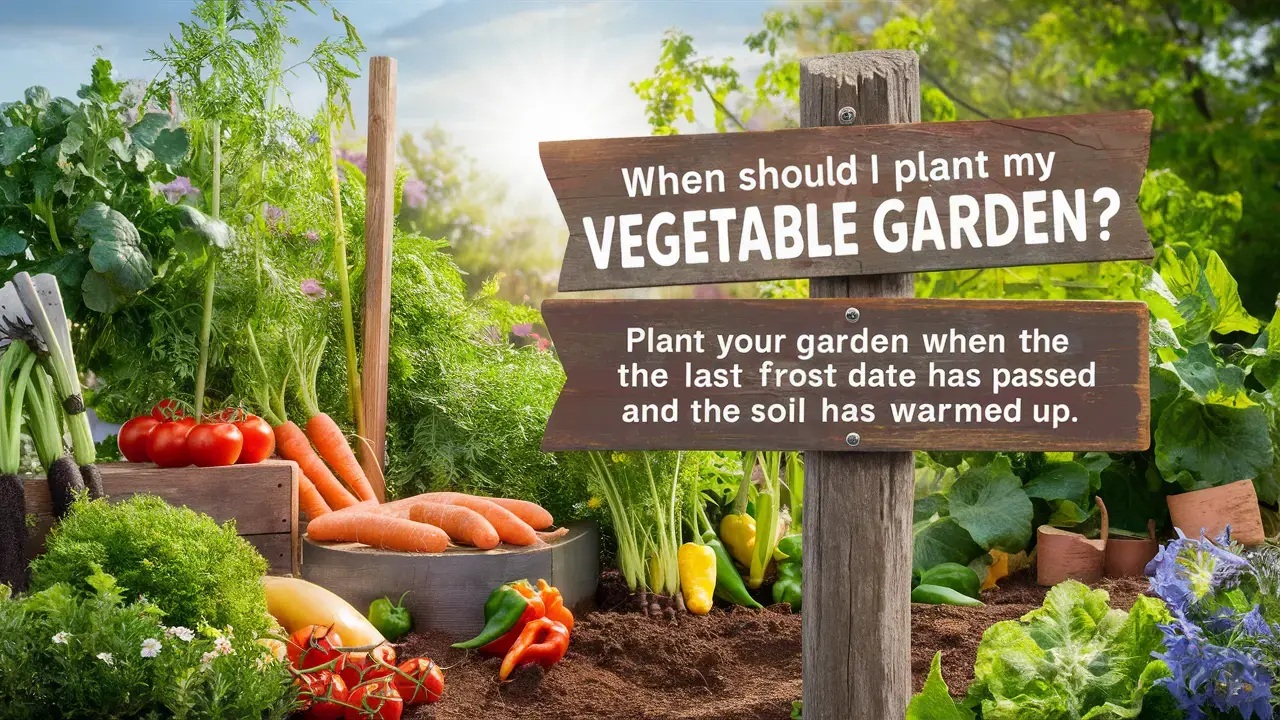When should I plant my vegetable garden? This question is vital for every gardener, pointing to a bountiful harvest” (Use “harvest” for consistency). Timing is everything in planting, and knowing when to plant can make the difference between a flourishing plant and a disappointing one. This comprehensive guide will walk you through all the fundamental perspectives of timing your plantings superbly. From understanding your growing zone to avoiding common mistakes, we’ve got you covered. Let’s get started!
Understanding Your Vegetable Garden Growing Zone
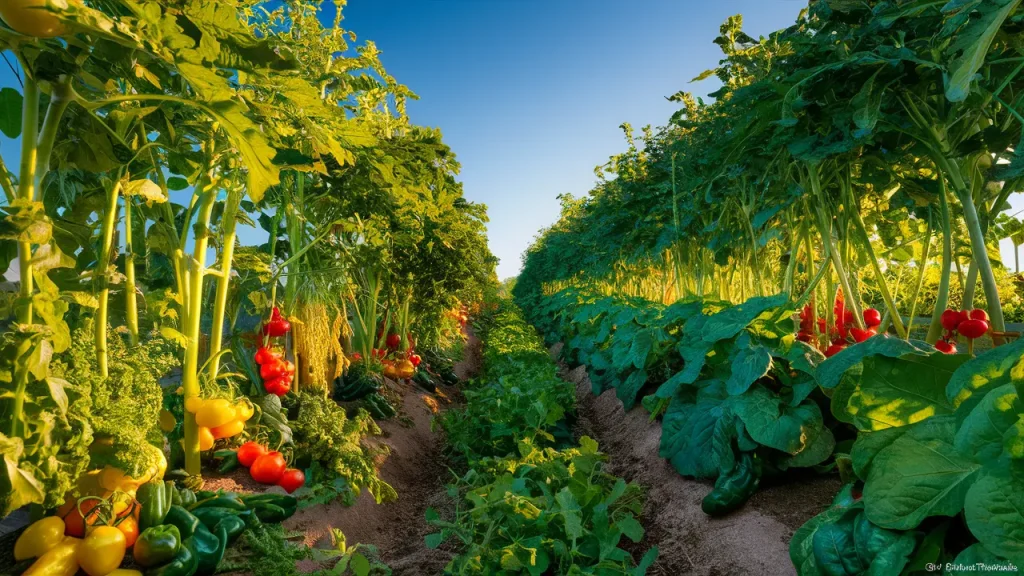
Knowing your USDA Toughness Zone is the primary step in arranging your vegetable garden. These zones are decided by the normal lowest winter temperatures, which makes a difference for nursery workers to know which plants will thrive in their locale. You’ll effortlessly discover your zone by entering your ZIP code into the USDA’s online zone finder.
What Are USDA Toughness Zones?
The USDA Solidness Zones are a standardized framework that isolates North America into 13 zones based on the average annual minimum winter temperatures. Each zone speaks to a 10°F contrast in the lowest temperature. For illustration, Zone 5 has a normal winter temperature of -20°F to -10°F, whereas Zone 6 has a normal winter temperature of -10°F to 0°F.
How to Discover Your Zone
To decide your USDA Toughness Zone, you can utilize the intelligent outline given by the USDA on their site. Essentially, enter your ZIP code, and the outline will show your zone. Knowing your zone makes a difference. You select plants that are best suited for your climate, and arrange the timing of your plantings to avoid ice harm.
Last Frost Dates
One of the basic components in choosing when to plant is the final frost date in your region. The last frost dates signify the normal final day in spring when ice is likely to form. Planting too early can expose delicate seedlings to ice damage. Neighborhood expansion administrations or planting apps can help you discover this data for your locale.
Why Last Frost Dates Matter
Ice can seriously harm or kill youthful plants. Knowing the normal last frost date permits you to arrange your planting plan to avoid exposing your plants to freezing temperatures. For warm-season crops, planting after the last frost dates guarantees that they have the warm temperatures they need to flourish.
How to Decide Your Area’s Last Frost Dates
The last frost date can be decided by authentic climate information for your region. Nearby expansion administrations, cultivating books, and online assets regularly give this data. Gardening apps also offer localized ice date data and updates to assist you in arranging your plantings.
Cool-Season vs. Warm-Season Vegetables
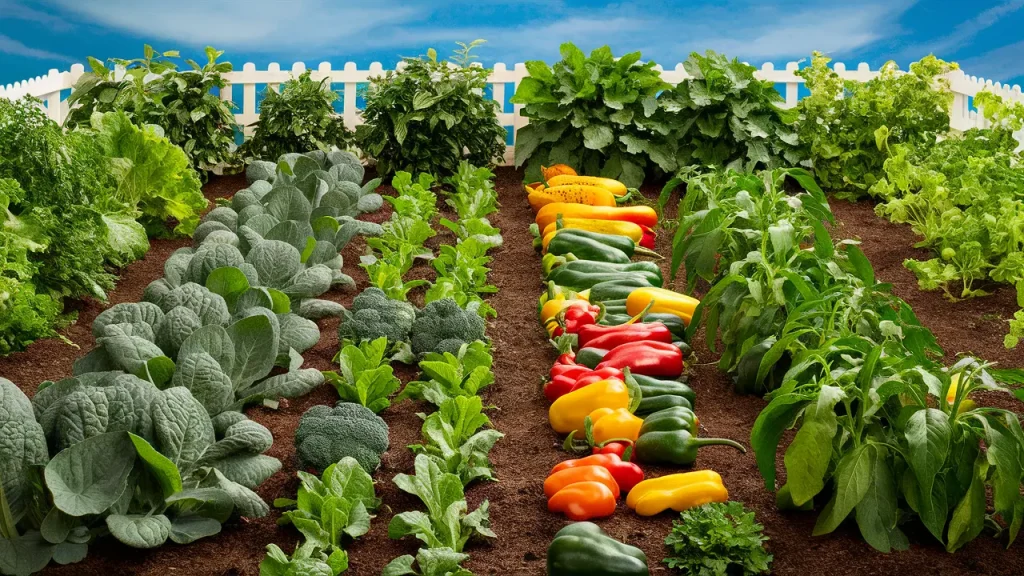
Vegetables are, by and large, categorized into cool-season and warm-season crops. Understanding the distinction is significant for timing your plantings accurately.
Cool-Season Vegetables
Cool-season vegetables flourish in cooler temperatures and can endure light ice. Cases incorporate lettuce, spinach, broccoli, peas, and radishes. These vegetables can be planted in early spring, many weeks before the last frost dates, and once more in late summer for a crop.
Warm-Season Vegetables
Warm-season vegetables require hotter temperatures and are sensitive to ice. Cases incorporate tomatoes, peppers, cucumbers, and squash. These crops ought to be planted after the last frost dates when the soil has warmed up adequately.
Planting Times for Each Sort
For cool-season vegetables, begin planting in early spring as long as the soil can be worked. Warm-season vegetables ought to be planted after the final frost date, usually in late spring or early summer. Amaze your plantings to guarantee a persistent harvest throughout the growing season.
Beginning Seeds Inside
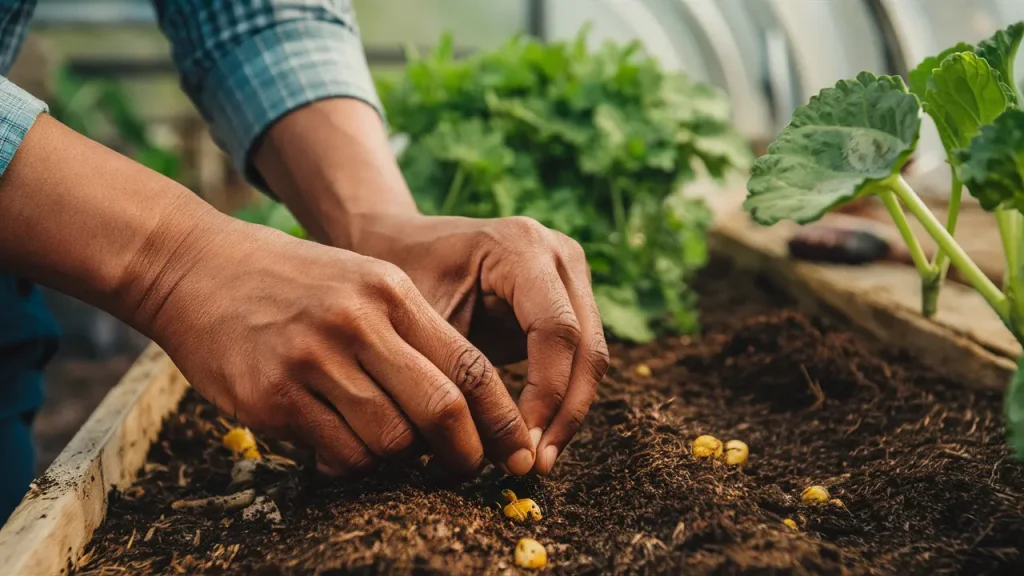
Beginning seeds inside gives you a head start on the growing season. This strategy is particularly valuable for plants that require a long growing period.
Benefits of Beginning Seeds Inside
Beginning seeds inside permits you to control the growing environment, giving ideal conditions for germination and early development. It moreover amplifies the growing season, giving you a kick-off on planting and permitting you to develop crops that require a longer growing period.
Best Time to Begin Seeds Inside
Regularly, seeds are sown within 6-8 weeks before the last frost dates. This timing permits the seedlings to develop solid roots and are ready to be transplanted into the plant. Utilize seed-starting plates and put them in a sunny area or beneath developed lights for the best results.
Transplanting Seedlings
Once your seedlings have developed and the chance of ice has passed, it’s time to transplant them into the plant.
When and How to Transplant
Transplant seedlings into the plant after the last frost dates, when the soil has warmed up. Choose a cloudy day or transplant within the evening to reduce transplant shock. Water the seedlings completely, just before transplanting and carefully evacuating them from their holders, being delicate with the roots.
Solidifying Off Prepare
Recently transplanted, it’s fundamental to solidify your plants by steadily acclimating them to open-air conditions. Begin by putting them outdoors for several hours each day, increasing the time day by day over a week. This preparation makes a difference in the seedlings’ acclimation to the harsher open-air environment and diminishes transplant shock.
Coordinate Sowing Seeds
A few vegetables are best sown directly into the soil. Coordinate sowing is invaluable for root crops like carrots and beets, which do not transplant well.
Points of interest in Coordinate Sowing
Coordinate sowing dispenses with the requirement for transplanting, decreasing the hazard of transplant shock. It also permits the plants to set up solid root frameworks in their permanent area from the beginning.
Best Hones for Coordinate Sowing
Guarantee the soil is warm and damp, and follow the seed bundle instructions for planting depth and dispersing. Lean seedlings as they develop to dodge stuffing and guarantee legitimate air circulation and light infiltration.
Succession Planting
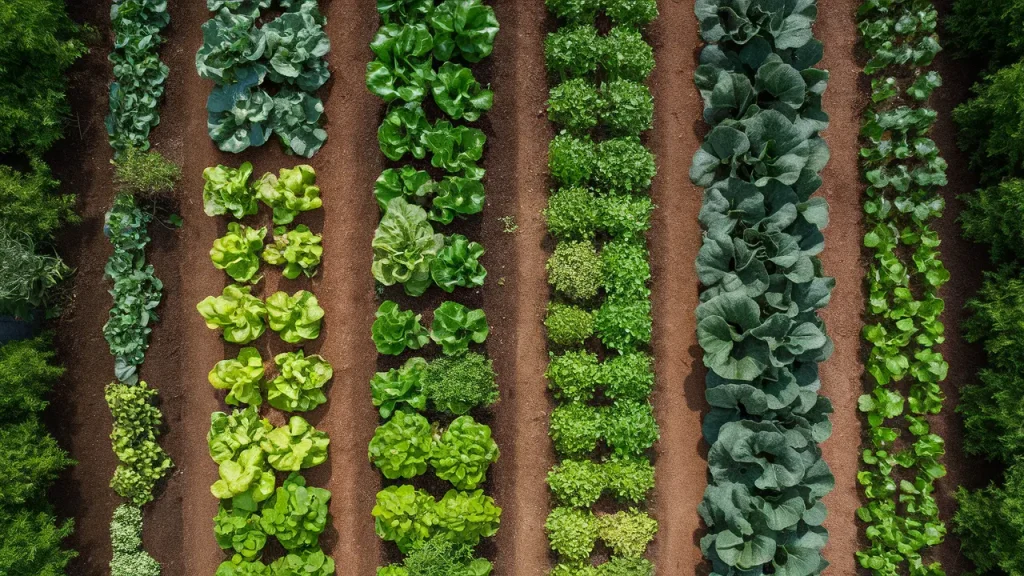
Succession Planting includes planting crops at regular intervals to ensure a continuous collection.
What is Succession Planting?
Succession Planting could be a technique where you plant unused crops every few weeks rather than planting everything at once. This strategy guarantees simply having a consistent supply of new vegetables throughout the growing season.
Timing for Succession Planting
For illustration, plant a row of lettuce every two weeks to have new greens all through the season. This method maximizes cultivated space and efficiency, and makes a difference in overseeing your gathering more successfully.
Companion Planting
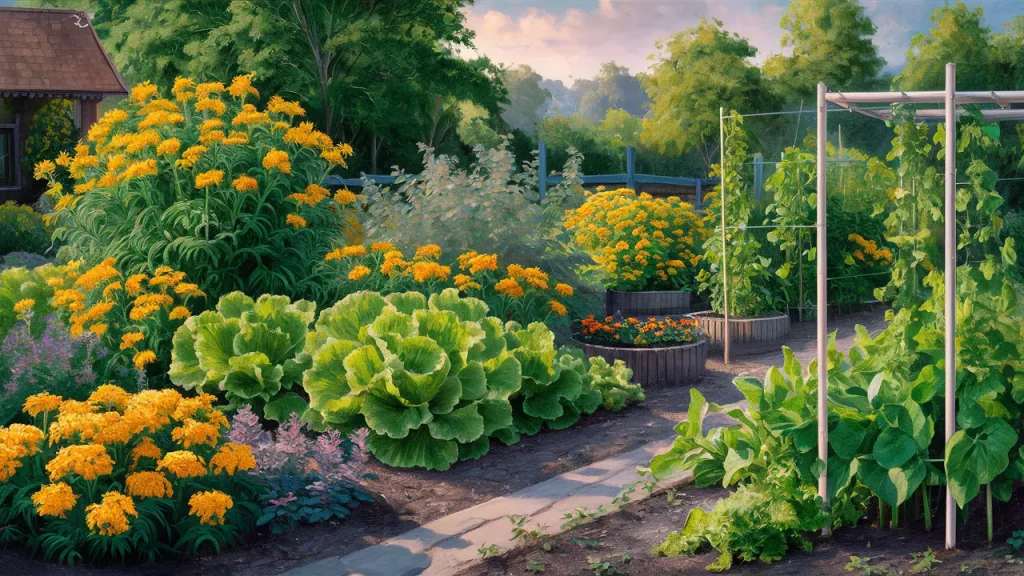
Companion planting includes growing certain plants together for a common benefit.
Benefits of Companion Planting
Companion planting can improve plant well-being, decrease pests, and upgrade flavor. For instance, planting basil close to tomatoes can enhance flavor and repel bugs. Marigolds can prevent nematodes and aphids when planted with different vegetables.
Timing Contemplations for Companion Planting
When arranging companion planting, consider the development propensities and dividing needs of each plant. Plant companions at the same time to guarantee they develop together agreeably. A few companions may have to be planted prior to or after, depending on their development cycles.
Drop Vegetable Gardening
Do not let the conclusion of summer stamp the conclusion of your gardening season. Fall gardening can be as profitable as it is fair with the proper planning.
What to Plant for a Drop Collection
Cool-season crops like kale, Brussels sprouts, carrots, and spinach can be planted in late summer for a fall gathering. These vegetables flourish in cooler temperatures and can withstand light ice.
Timing and Tips for Drop Planting
To guarantee an effective fall garden, calculate the days to development for each plant and tally in reverse from the primary anticipated frost date. This will give you the most recent planting date for each vegetable. Utilize push covers or cold outlines to amplify the growing season and protect plants from early ice.
Utilizing Plant Calendars
A plant calendar is an important tool for arranging your planting plan.
How to Form a Cultivate Calendar
To form a cultivated calendar, begin by noticing your last frost dates and begin with the ice date. At that point, stamp the ideal planting dates for each edit based on these frost dates. You’ll utilize a physical calendar, a spreadsheet, or gardening apps to keep track of your plan.
Benefits of Employing a Plant Calendar
A garden calendar makes a difference, as it helps you remain organized and guarantees you plant at the proper time. It moreover makes a difference if you arrange for progressive planting and oversee crop turns successfully.
Common Planting Botches to Avoid
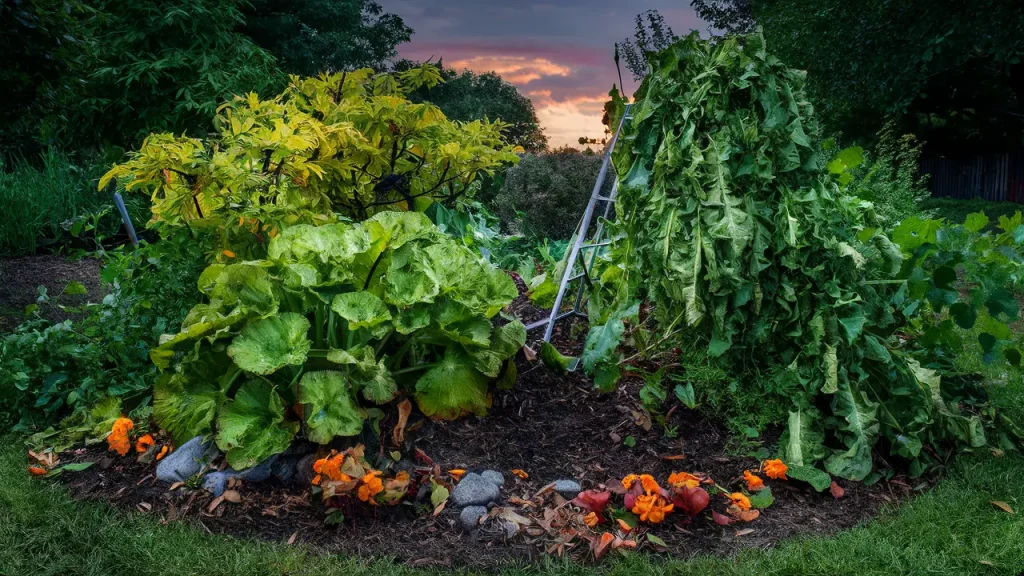
Avoid these common pitfalls to guarantee an effective plant:
Packing
Plants require space to develop. Take after-dining suggestions to avoid competition for supplements and light. Overcrowding can lead to hindered development, increased disease risk, and diminished yields.
Planting Too Early or Too Late
Timing is significant. Planting at the off-base time can lead to stunted germination and development. Utilize ice dates and soil temperature rules to decide the finest planting times for each crop.
Overlooking Soil Temperature
Soil temperature influences seed germination. Utilize a soil thermometer to guarantee the soil is at the correct temperature for planting. Cool-season crops can be planted when the soil is 40-50°F, whereas warm-season crops require soil temperatures of 60-70°F.
Territorial Planting Guides
Planting times can change altogether depending on your region.
Planting Times for Different Districts
Different districts have different climates, affecting planting times. For illustration, southern locales may have longer growing seasons and can plant earlier, while northern locales may have shorter seasons and later planting dates.
Assets for Territorial Planting Guides
Neighborhood expansion administrations regularly give planting guides tailored to your region. These guides consider neighborhood climate conditions and offer the finest times to plant different crops. Gardening books and online assets can moreover give profitable territorial planting data.
Utilizing Innovation in Gardening Arranging

Cutting-edge innovation can rearrange and cultivate planning.
Gardening Apps and Apparatuses
Gardening apps can assist you in tracking planting dates, recognizing plants, and indeed analyzing plant illnesses. A few well-known apps incorporate Gardener’s Supply Company, PlantSnap, and Gardenize. These devices can give personalized planting plans and updates based on your area.
How Innovation Can Offer Assistance with Timing
Apparatuses like soil sensors and climate stations can give real-time information to optimize your garden’s well-being and efficiency. Soil sensors measure soil dampness and temperature, making a difference when you choose when to water and plant. Climate stations can give nearby weather forecasts and warnings to assist you in protecting your plants from unfavorable conditions.
FAQs on When Should I Plant My Vegetable Garden
- What vegetables can I plant early in the season?
Cool-season vegetables like lettuce, spinach, peas, and radishes can be planted early within the season, indeed sometimes even after the last frost dates. - How can I expand my growing season?
You’ll amplify your growing season by utilizing push covers, cold frames, or nurseries to protect plants from early or late freezes and by planting assortments with different development times. - Is it way better to begin with seeds or seedlings?
Both have their focal points. Beginning with seeds is cost-effective and offers a more extensive variety, while seedlings give a head start in the growing season - What are the most excellent vegetables for apprentices?
Easy-to-grow vegetables for Beginners include lettuce, radishes, tomatoes, cucumbers, and green beans. These crops are moderately low-maintenance and have a high viability rate.
Conclusion
Timing your vegetable planting is vital for a fruitful harvest. By understanding your growing zone, last frost dates, and the particular needs of each crop, you’ll be able to arrange it successfully. Utilize tools like plant calendars and innovation to help in your planning. With cautious timing and a bit of exertion, your plant can flourish and provide delicious, home-grown produce all through the growing season. Keep in mind that knowing when to plant your vegetable garden is the primary step toward a productive planting experience.

